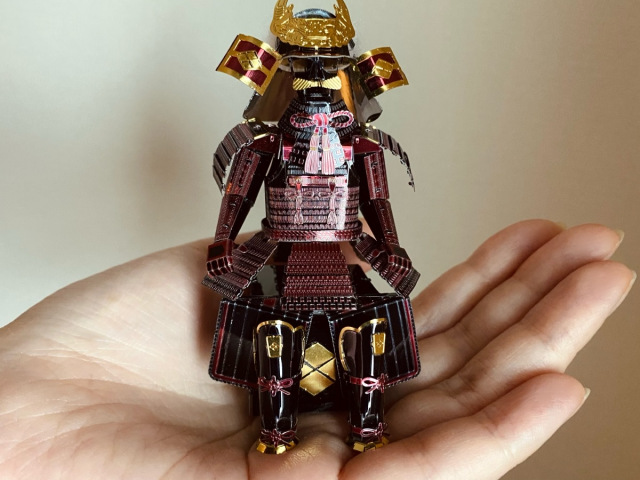
This palm-sized warrior tries our patience in all sorts of ways.
After trying our hand at making a model of a tiny Japanese oden stall last week, we were bitten by the bug of model-making and keen to expand our new-found skills with a more complex design.
That’s when we found Tenyo’s metallic nano-puzzle, which allows you to create realistic models using thin metal plates. Best known for their Star Wars series, which includes the Millennium Falcon and the AT-AT, the quality of Tenyo’s models are known to be excellent as they always place a high emphasis on realism in everything they produce.
What piqued our interest was the brand’s “armour” series, which lets you recreate the warrior armour of Japanese military commanders like Nobunaga Oda, Mitsuhide Akechi, and Hideyoshi Toyotomi. We chose to make the armour of Takeda Shingen, due to its wild-looking yak-hair helmet, called “Suwa Hosho no Kabuto“, the likes of which were worn by no other military commander.
▼ The “Takeda Shingen Armour” metallic nano-puzzle cost us 1,980 yen (US$19.12) plus tax.
After we opened the set and took a look at all the metal pieces, we knew this wouldn’t be an easy task. However, at this point, we didn’t realise just how much mental stamina it would take to bring the powerful daimyo to life.
The parts for this model are laser-cut ultra-thin metal sheets, which are surprisingly easy to pop out with a few tugs and bends. It’s actually better to pull these out from the sheet rather than cut them, as it reduces the chance of cutting yourself on super sharp edges.
The metal sheets are pliable, in order to create curves that match the contours of the human body. The instructions are easy to understand too, so at this point, we thought we were in for an easy ride.
However, a lot of the parts were tiiiiiiny! Take a look at the size of this nose-piece next to a 10-yen coin, for example. It was probably only about two millimetres (0.08 inches) in size.
The nose-piece is flat, which means you have to fold it along the lines, insert it into the hole on the face mask, and delicately twist the hooks on the side to fix it into position. This turned out to be incredibly difficult, as the metal part won’t attach unless it’s held perfectly in the gap made for it, so we had to adjust the angle of the curve over and over again to get the hooks to stay in place.
It requires confident movements to get it in, but you have to have a delicate hand at the same time to avoid crushing or breaking the tiny hooks, which are themselves less than one millimetre in size.
▼ We learnt this lesson the hard way, because we snapped some pieces off by accident and had to reattach them with glue.
Still, inspired by the strength of the samurai warrior whose armour we were making, we carried on, clipping tiny sheets together to form the platelets that make up the kusazuri, which protects the lower body and upper leg.
Once we had the knack of it, it didn’t take us long to finish making the dou (chest armour) as well.
The steady-handed work continued, as we repeatedly made fine adjustments to the tiny pieces to bring different parts of the armour together.
The precision of the parts is impressive and the details are elaborate, so much so that when it came time to put the main sections together, even we were blown away by just how amazing it looked!
After three days — yes, THREE days — our little samurai armour was complete! Our fingertips and nails were tattered and ruined, but for a piece this stunning, it was definitely worth it.
▼ The finish was insanely cool and the faux hair was perfect — it looked like something you’d see in a museum!
▼ The texture of the metal made it look like real armour.
Looking at the creation, we felt it had a mysterious aura to it, almost as if it were alive and breathing a ferociousness far removed from the world of human beings. The helmet in particular captured our attention, as it’s said to represent the war god Suwa Myojin, with many believing it to be blessed by the god to provide its wearer with success in battle.
It wasn’t an easy road to create the miniature armour, but there’s a lot of joy that comes with its completion, so if you’re up for a rewarding challenge, we highly recommend giving it a try! Now it’s time for us to continue onwards and upwards with our model-making, so maybe one day we can make a miniature version of Tokyo as detailed as this one we saw earlier this year.
Photos © SoraNews24
● Want to hear about SoraNews24’s latest articles as soon as they’re published? Follow us on Facebook and Twitter!
[ Read in Japanese ]

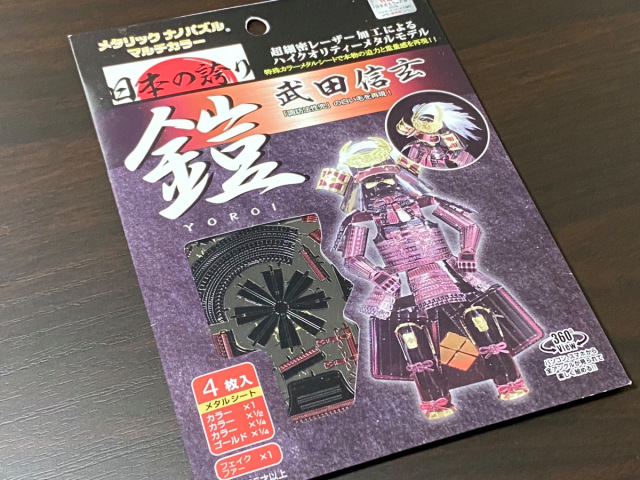
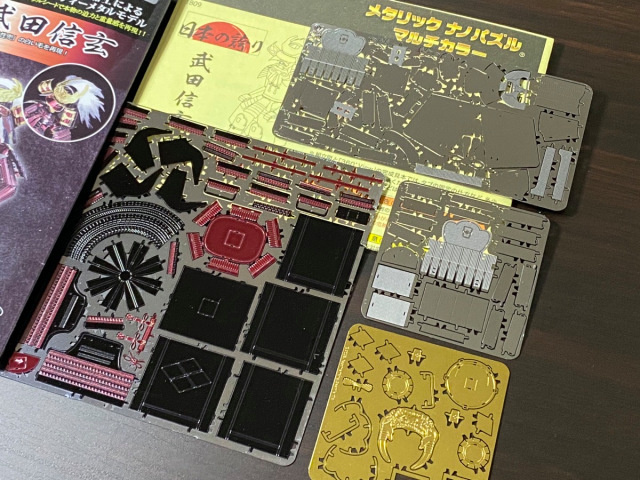
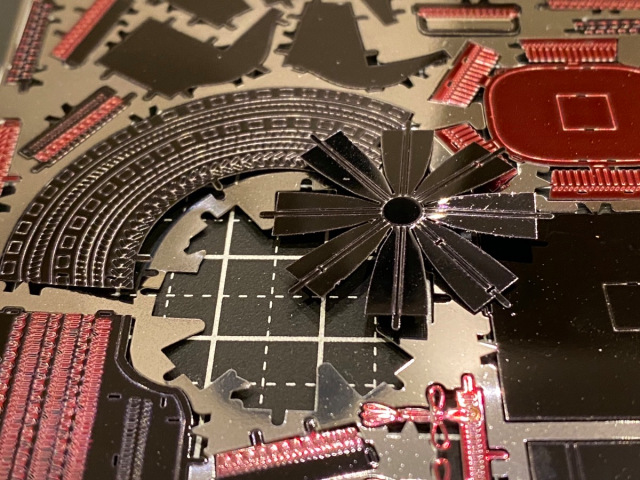
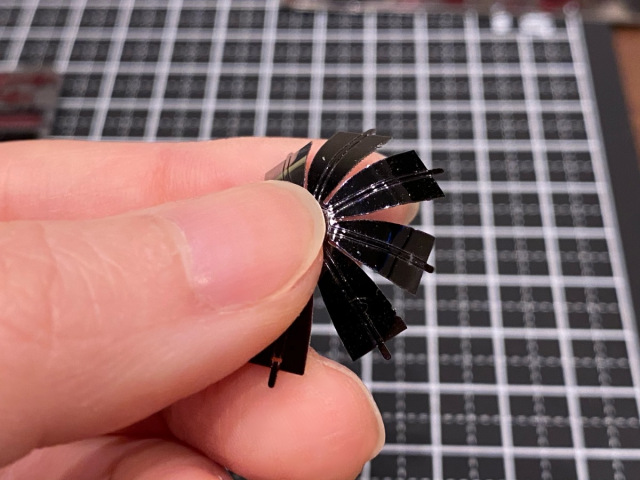

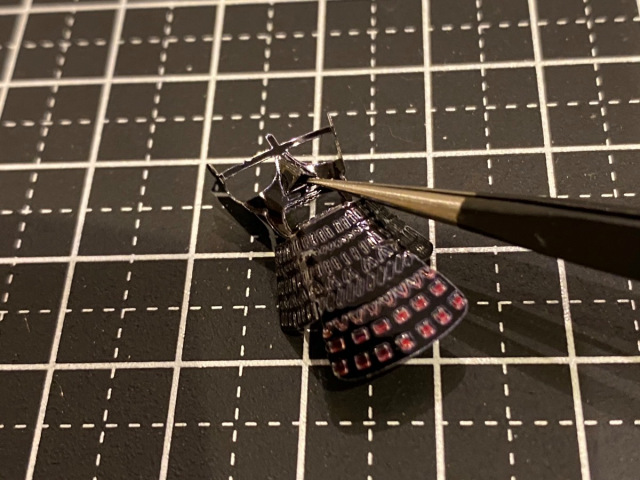
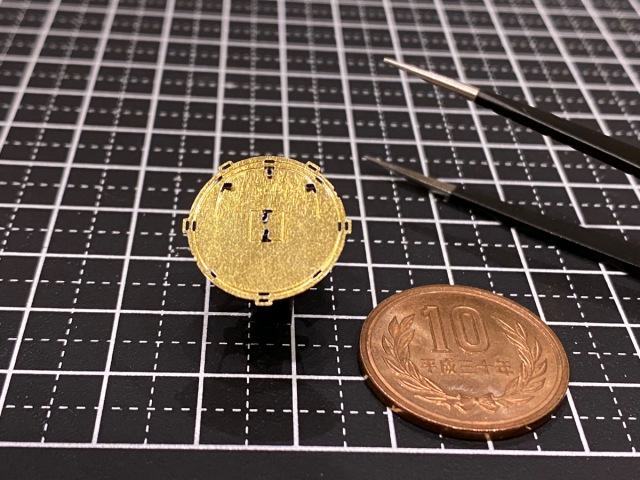
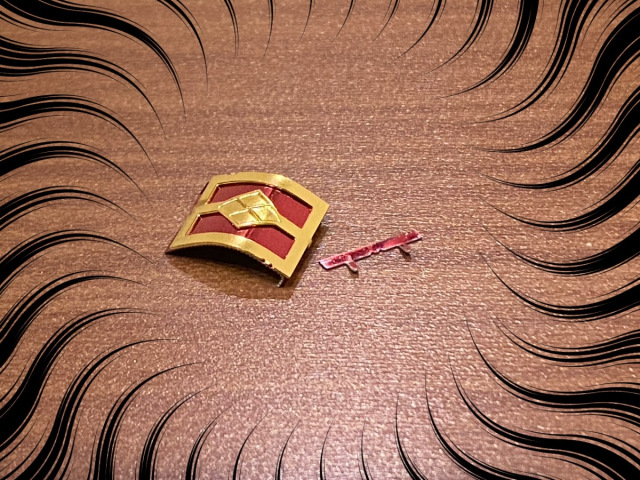
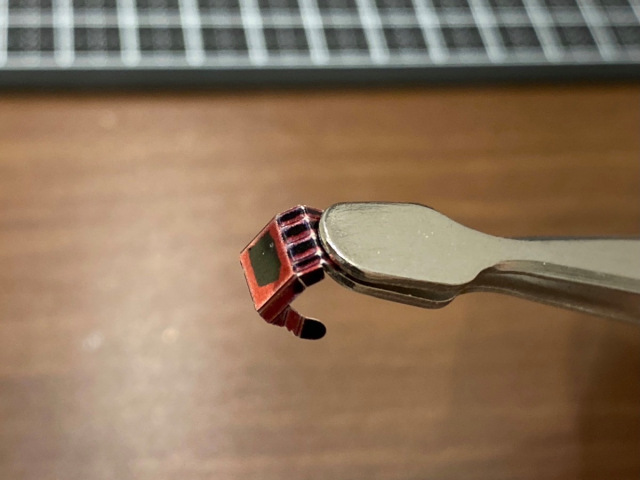
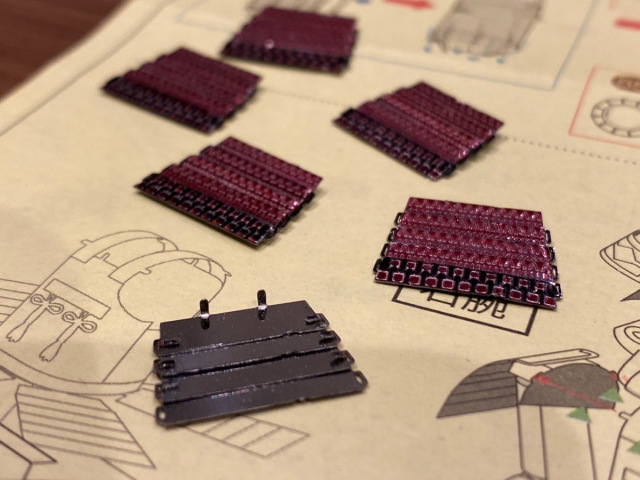
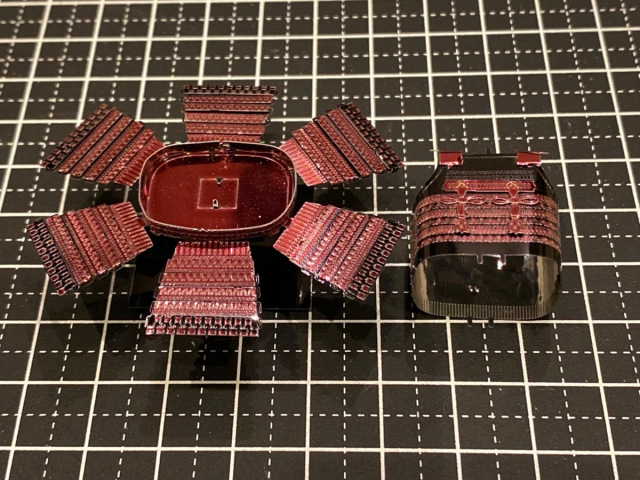
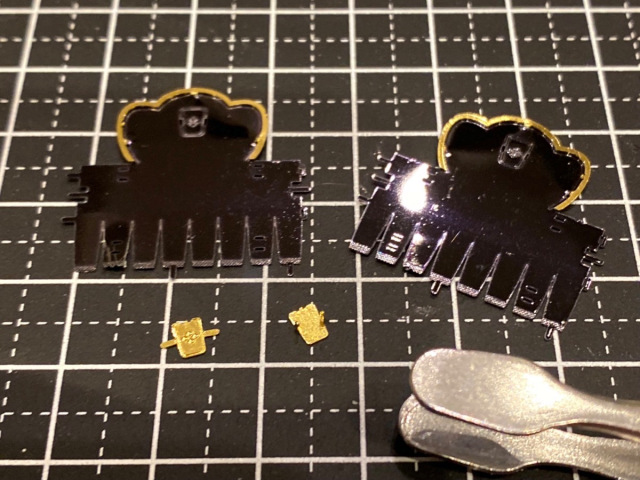
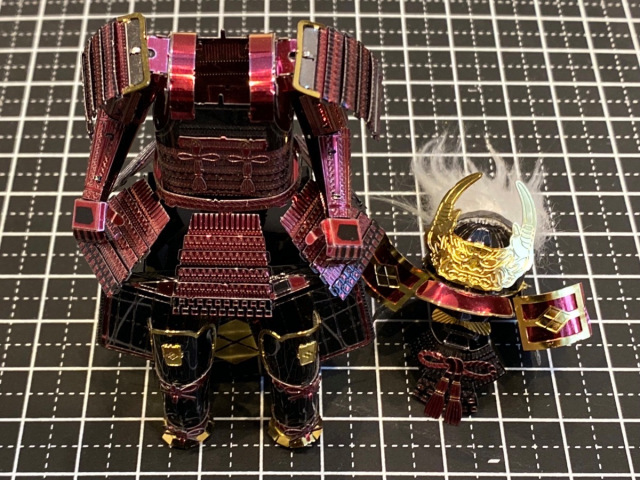
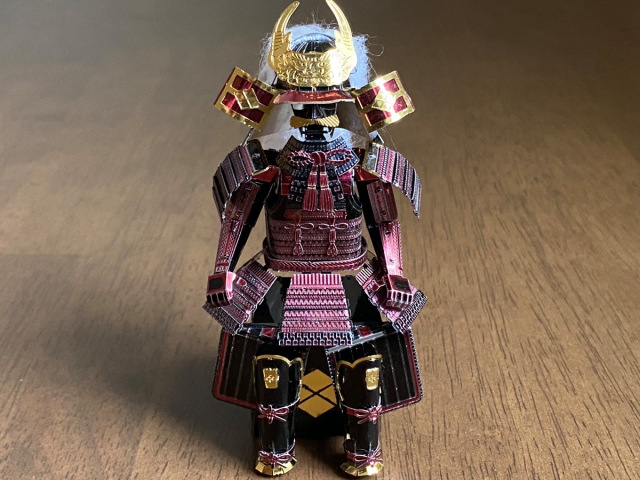

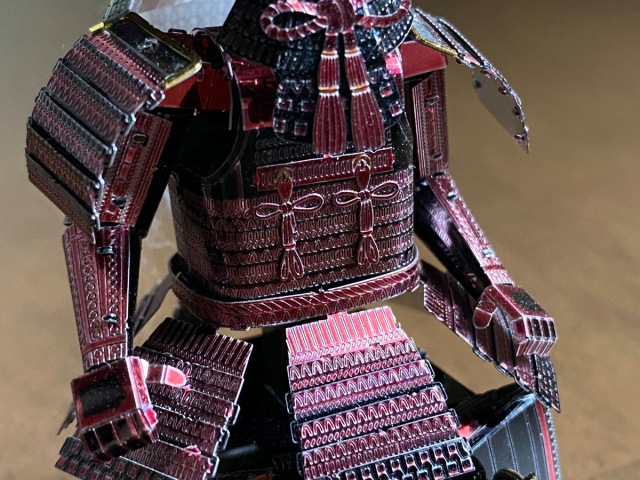
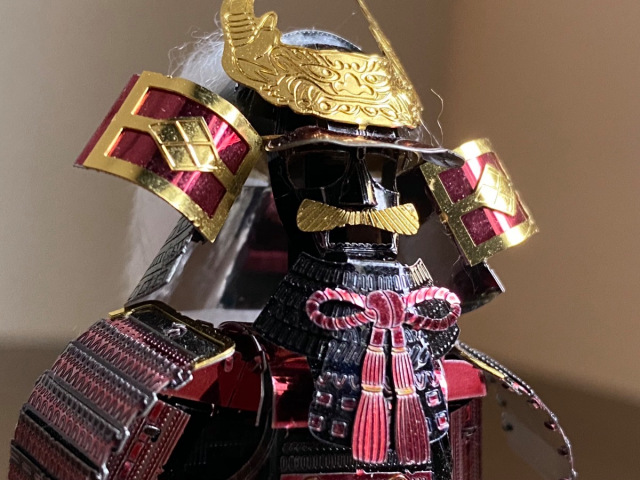
 Samurai C-3PO is the Japanese warrior droid we’ve all been waiting for
Samurai C-3PO is the Japanese warrior droid we’ve all been waiting for Protect your drinks with Samurai armour bottle covers
Protect your drinks with Samurai armour bottle covers Did samurai use armoured cats and mice in battle?
Did samurai use armoured cats and mice in battle? Look out! Here comes the Samurai Spider-Man
Look out! Here comes the Samurai Spider-Man We check out the new Samurai Star Wars figurines from Bandai and Tamashii Nations【Pics】
We check out the new Samurai Star Wars figurines from Bandai and Tamashii Nations【Pics】 New Nintendo Lego kit is a beautiful piece of moving pixel art of Mario and Yoshi【Photos】
New Nintendo Lego kit is a beautiful piece of moving pixel art of Mario and Yoshi【Photos】 How to order snacks on a Shinkansen bullet train in Japan
How to order snacks on a Shinkansen bullet train in Japan Hello, cosmetics! Clinique teams up with Hello Kitty this summer for first-time collaboration
Hello, cosmetics! Clinique teams up with Hello Kitty this summer for first-time collaboration Demon Slayer: Kimetsu no Yaiba gets new roller coaster attractions and food at Universal Studios Japan
Demon Slayer: Kimetsu no Yaiba gets new roller coaster attractions and food at Universal Studios Japan McDonald’s adds new watermelon frappe and fruity macaron to its menu in Japan
McDonald’s adds new watermelon frappe and fruity macaron to its menu in Japan Cosmetic wizardry: Asian women removing makeup to reveal their true selves goes viral【Video】
Cosmetic wizardry: Asian women removing makeup to reveal their true selves goes viral【Video】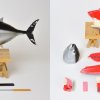 Tsukiji Fish Market Vendor Releases Tuna For Home Assembly
Tsukiji Fish Market Vendor Releases Tuna For Home Assembly High-fashion Totoro cuddle purse is like an elegant stroll in the forest【Photos】
High-fashion Totoro cuddle purse is like an elegant stroll in the forest【Photos】 U.S. Olympic athlete reveals he runs with Yi-Gi-Oh! cards tucked into his uniform【Video】
U.S. Olympic athlete reveals he runs with Yi-Gi-Oh! cards tucked into his uniform【Video】 Japan’s new difficult-to-drink-from beer glass protects your liver, but it’s a brutal experience
Japan’s new difficult-to-drink-from beer glass protects your liver, but it’s a brutal experience Nintendo history you can feel – Super NES, N64, and GameCube controllers become capsule toys
Nintendo history you can feel – Super NES, N64, and GameCube controllers become capsule toys “The most Delicious Cup Noodle in history” – Japan’s French Cup Noodle wins our heart【Taste test】
“The most Delicious Cup Noodle in history” – Japan’s French Cup Noodle wins our heart【Taste test】 Starbucks releases a cute Frappuccino and Unicorn Cake…but not in Japan
Starbucks releases a cute Frappuccino and Unicorn Cake…but not in Japan Kyoto Tower mascot termination reveals dark side behind cute Japanese characters
Kyoto Tower mascot termination reveals dark side behind cute Japanese characters McDonald’s Japan’s Soft Twist Tower: A phantom ice cream only sold at select branches
McDonald’s Japan’s Soft Twist Tower: A phantom ice cream only sold at select branches Yabai Ramen: What makes this Japanese ramen so dangerous?
Yabai Ramen: What makes this Japanese ramen so dangerous? Finally! Nintendo Japan expands Switch 8-bit controller sales to everybody, Online member or not
Finally! Nintendo Japan expands Switch 8-bit controller sales to everybody, Online member or not Japanese government wants to build luxury resorts in all national parks for foreign tourists
Japanese government wants to build luxury resorts in all national parks for foreign tourists To combat declining birth rate, Japan to begin offering “Breeding Visas” to foreigners
To combat declining birth rate, Japan to begin offering “Breeding Visas” to foreigners 10 things you should buy at 7-Eleven in Japan
10 things you should buy at 7-Eleven in Japan Studio Ghibli releases anime heroine cosplay dresses that are super comfy to wear
Studio Ghibli releases anime heroine cosplay dresses that are super comfy to wear Woman charged for driving suitcase without a license in Osaka
Woman charged for driving suitcase without a license in Osaka Studio Ghibli unveils My Neighbour Totoro miniature house model
Studio Ghibli unveils My Neighbour Totoro miniature house model Kyoto experiencing problems with foreign tourists not paying for bus fares, but not on purpose
Kyoto experiencing problems with foreign tourists not paying for bus fares, but not on purpose Fighting mild hunger with a Japanese soda that turns into jelly in the stomach【Taste test】
Fighting mild hunger with a Japanese soda that turns into jelly in the stomach【Taste test】 Studio Ghibli’s Howl’s Moving Castle tapestry unveiled in Japan for first time
Studio Ghibli’s Howl’s Moving Castle tapestry unveiled in Japan for first time McDonald’s new Happy Meals offer up cute and practical Sanrio lifestyle goods
McDonald’s new Happy Meals offer up cute and practical Sanrio lifestyle goods Sales of Japan’s most convenient train ticket/shopping payment cards suspended indefinitely
Sales of Japan’s most convenient train ticket/shopping payment cards suspended indefinitely Sold-out Studio Ghibli desktop humidifiers are back so Totoro can help you through the dry season
Sold-out Studio Ghibli desktop humidifiers are back so Totoro can help you through the dry season Japanese government to make first change to romanization spelling rules since the 1950s
Japanese government to make first change to romanization spelling rules since the 1950s Foreigner’s request for help in Tokyo makes us sad for the state of society
Foreigner’s request for help in Tokyo makes us sad for the state of society Ghibli founders Toshio Suzuki and Hayao Miyazaki contribute to Japanese whisky Totoro label design
Ghibli founders Toshio Suzuki and Hayao Miyazaki contribute to Japanese whisky Totoro label design Doraemon found buried at sea as scene from 1993 anime becomes real life【Photos】
Doraemon found buried at sea as scene from 1993 anime becomes real life【Photos】 Tokyo’s most famous Starbucks is closed
Tokyo’s most famous Starbucks is closed Princesses, fruits, and blacksmiths: Study reveals the 30 most unusual family names in Japan
Princesses, fruits, and blacksmiths: Study reveals the 30 most unusual family names in Japan New capsule toy collection features military commander samurai armour from the Sengoku Period
New capsule toy collection features military commander samurai armour from the Sengoku Period Studio Ghibli releases new action figures featuring Nausicaä of the Valley of the Wind characters
Studio Ghibli releases new action figures featuring Nausicaä of the Valley of the Wind characters We build a miniature Japanese oden stall with gorgeous results
We build a miniature Japanese oden stall with gorgeous results New samurai glasses are Japan’s latest weird must-have souvenir
New samurai glasses are Japan’s latest weird must-have souvenir Japanese ambassador stayed in Ukraine to fight in his grandfather’s samurai armour? No, not true
Japanese ambassador stayed in Ukraine to fight in his grandfather’s samurai armour? No, not true We visit the awesome new Samurai Museum in Shinjuku【Photos】
We visit the awesome new Samurai Museum in Shinjuku【Photos】 Kamon kamon kamon kamon…branding? Pumps to bring out your inner feudal warlord
Kamon kamon kamon kamon…branding? Pumps to bring out your inner feudal warlord Prefectural capital building in Japan has a moat, ready for mobs of invaders or zombies
Prefectural capital building in Japan has a moat, ready for mobs of invaders or zombies Samurai Colonel Sanders is coming to KFC stores around Japan
Samurai Colonel Sanders is coming to KFC stores around Japan Surreal samurai art exhibition mixes the historical with the bizarre
Surreal samurai art exhibition mixes the historical with the bizarre Detailed explanation of Japanese armor?!? Show me!
Detailed explanation of Japanese armor?!? Show me! Scholars confirm first discovery of Japanese sword from master bladesmith Masamune in 150 years
Scholars confirm first discovery of Japanese sword from master bladesmith Masamune in 150 years Japanese hobbyist makes real tiny pizzas in a fully working, smoking miniature wood-fired oven!
Japanese hobbyist makes real tiny pizzas in a fully working, smoking miniature wood-fired oven! Japan’s new tiny ninja capsule toy collection turns your desk into a secret hideout
Japan’s new tiny ninja capsule toy collection turns your desk into a secret hideout Recreate the Ghibli Museum at home in cute miniature form
Recreate the Ghibli Museum at home in cute miniature form
Leave a Reply